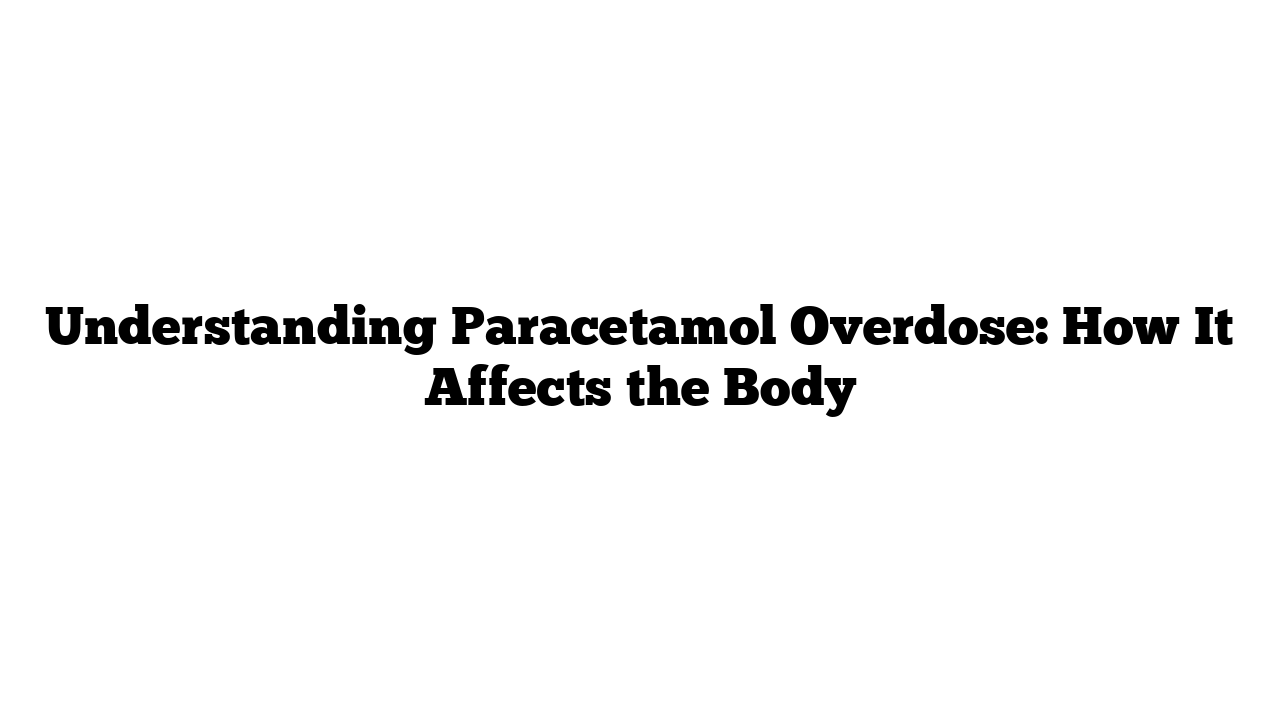Paracetamol, or acetaminophen, is one of the most commonly used over-the-counter medications for pain relief. While generally safe at the recommended dosage, overdosing can lead to severe consequences, including liver damage and even death.
Here’s how paracetamol works, what happens during an overdose, and how timely treatment can save lives.
How Paracetamol Works
Paracetamol reduces pain by interfering with the body’s inflammatory response.
- Injury and Inflammation: When cells are damaged, enzymes like phospholipase release arachidonic acid, which COX enzymes convert into prostaglandins. These prostaglandins help the body heal but also cause pain.
- Paracetamol’s Role: It inhibits COX enzymes, reducing prostaglandin production and relieving pain.
In safe amounts, paracetamol is effective and widely used. However, exceeding the maximum adult dose of 4 grams per day (about eight pills) can be dangerous.
What Happens in a Paracetamol Overdose?
To understand overdose effects, it’s crucial to know how the liver metabolizes paracetamol.
- Normal Metabolism:
- 55% is converted into paracetamol glucuronide.
- 30% becomes paracetamol sulfate.
- 15% is processed into paracetamol glutathione via an intermediate compound called NAPQI (N-acetyl-p-benzoquinone imine).
- Overdose Scenario:
- Excess paracetamol overwhelms the first two pathways.
- More paracetamol is diverted to the third pathway, producing a large amount of toxic NAPQI.
- The liver’s glutathione stores, essential for neutralizing NAPQI, become depleted.
- Toxic Effects:
- Accumulating NAPQI causes liver cell death (necrosis).
- If untreated, this can lead to liver failure, systemic organ failure, or heart failure due to blood circulation issues.
Symptoms of Paracetamol Overdose
- Early symptoms (first 24 hours): Nausea, vomiting, and abdominal discomfort.
- Later symptoms: Acute pain in the upper right abdomen, signaling liver damage.
Why Paracetamol Overdose Isn’t Always Fatal
Despite its dangers, paracetamol overdoses have relatively low fatality rates, thanks to:
- Delayed Toxicity: It can take up to 24 hours for severe liver damage to manifest, giving patients time to seek medical help.
- Effective Treatment: Administering N-acetylcysteine (NAC) replenishes glutathione, helping detoxify NAPQI and prevent liver failure.
Case Studies: Hope in Timely Treatment
- A 24-year-old woman who ingested 50 grams (over three times the fatal dose) was treated with NAC for three days and discharged with no significant liver damage.
- A 64-year-old woman who consumed 104 grams (seven times the fatal dose) also recovered fully after several days of NAC treatment.
Key Takeaways
- Safe Use: Never exceed the recommended dose of 4 grams per day.
- Overdose Risks: Toxicity occurs at around 10 grams or 20 pills in adults.
- Seek Help Promptly: Early treatment with NAC can significantly improve outcomes.
For more trusted health advice, visit medicaltimes.io and these resources:
- CDC Guidelines on Acetaminophen Safety
- Mayo Clinic on Paracetamol Overdose
- WHO Resources on Pain Management
FAQs
1. What is the first sign of paracetamol overdose?
Mild nausea, vomiting, and abdominal discomfort.
2. How long does it take for symptoms to worsen?
Severe liver damage symptoms may appear after 24 hours.
3. Is there an antidote for paracetamol overdose?
Yes, N-acetylcysteine (NAC) is highly effective when given promptly.
4. Can children overdose on paracetamol?
Yes, but toxic doses are lower for children. Always follow pediatric dosage guidelines.
ParacetamolSafety #AcetaminophenOverdose #LiverHealth
